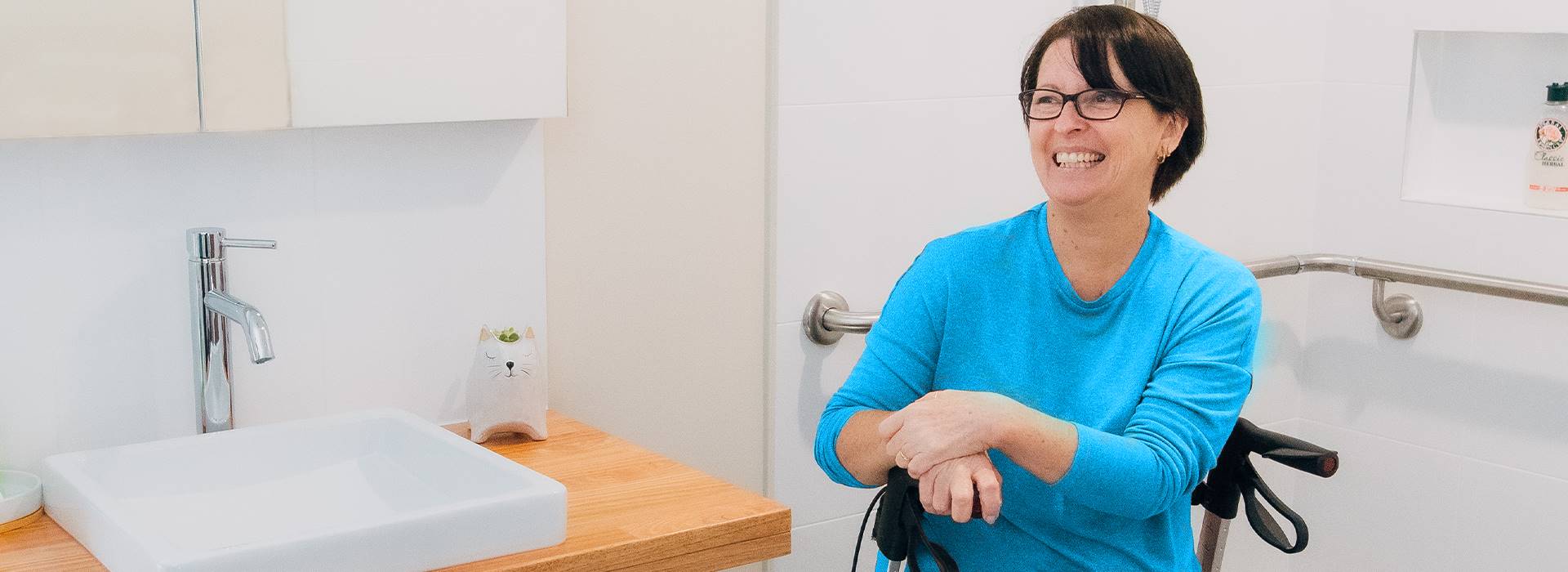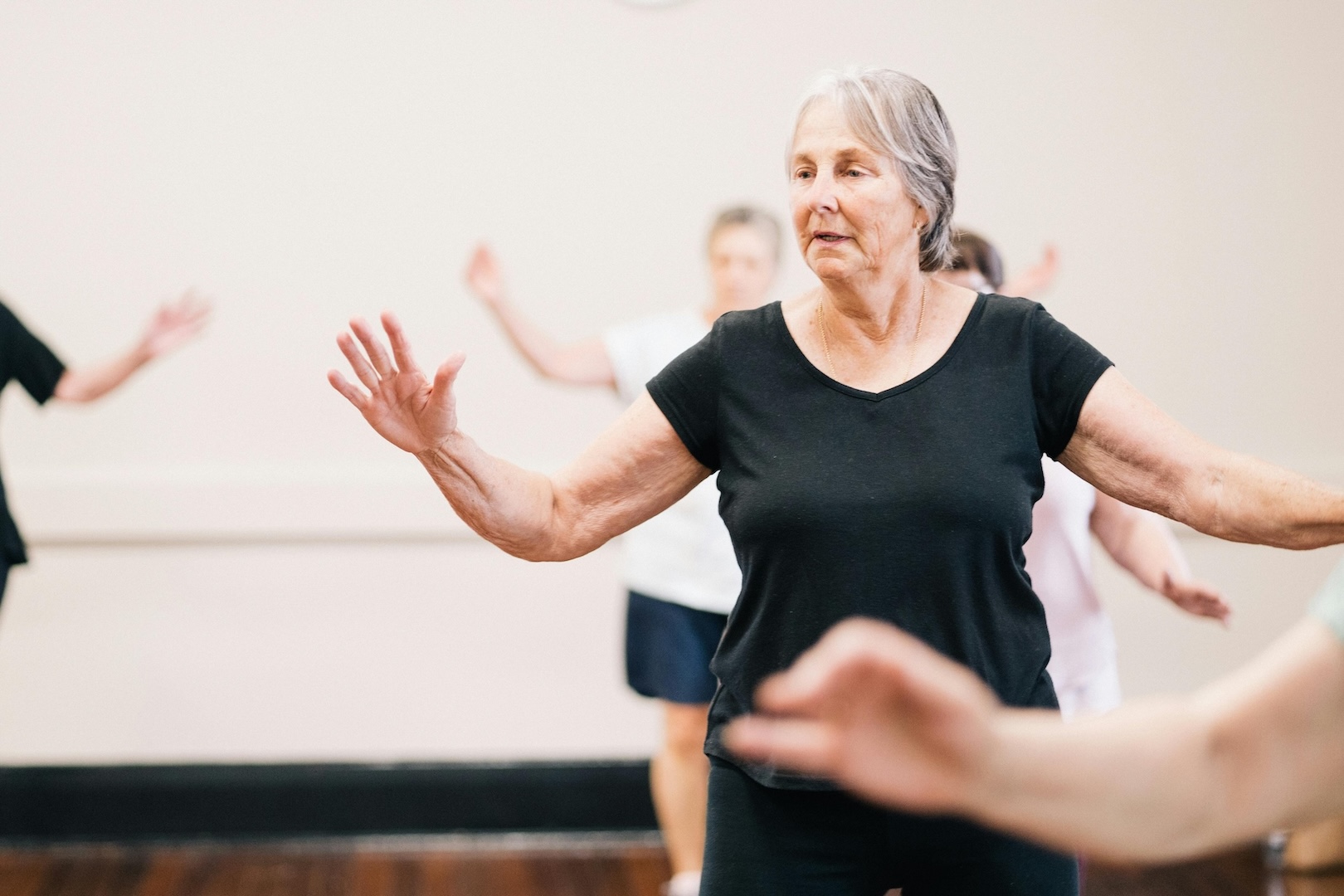Everything you need to know about home modifications…and more!
What are home modifications?
The NDIS defines home modifications as, ‘changes to the structure, layout or fittings of a participant’s home so they safely access it and move around comfortably in areas they frequently use’. These modifications ultimately help the recipient to achieve their specific goals based on their individual needs. Home modifications can range from minor changes like the installation of a grab rail in the bathroom to assist with stability, or major changes like the installation of a ramp.
Why are home modifications necessary?
Knowledge of universal design and other principles of making homes accessible is increasing. Although there are new homes being built with these principles in mind, accessibility issues mean many existing dwellings can be impractical for people who are living with a disability. For a person who uses a mobility aid, for example, a stair case presents an impediment to free movement throughout the home. Many decisions made during the house design phase fail to consider the functional potential of a space for anyone living with a disability.
What are the benefits of home modifications?
Home modifications make buildings more accessible, and from this a multitude of benefits arise such as:
- Improved independence
- Enhanced safety
- Increased confidence
- Greater inclusivity
What does accessible mean?
Commonly used definitions of ‘accessible’ include:
- Able to be reached or entered
- Able to be easily obtained or used
- Easily understood or appreciated
When it comes to home modifications, these definitions account for the ease with which a person can move around their own home, and the extent to which a person can effectively and efficiently utilise the space.
To understand this in real terms consider the practical, everyday tasks that modifications make possible or easier, such as:
- Entering and exiting the shower recess independently in a way that is safe and suitable
- Sitting at the kitchen bench in a wheelchair and have the bench at a suitable height
- Accessing the home in a way that best suits a person’s needs, e.g., via a ramp
- Moving through doorways, hallways and around spaces without impediment, e.g., because they are too narrow
Why increased mobility and independence matters
Home modifications are often an integral part of achieving outcomes relating to independence, safety and improved confidence. For example, a client with mobility issues arising from a medical condition might find themselves reliant on a carer or loved one to move safely around their own home due to risk of falling or tripping. In this situation a person can experience a significant loss of independence in attempting to undertake simple daily tasks, which can in turn affect their quality of life.
Home modifications that are designed to reduce trip hazards and increase access, by replacing existing facilities with safer alternatives such as level access showers or ambulant toilets improve functionality and increase safety. Further, structural changes like the widening of doorways for wheelchair access facilitate increased independence for a client by allowing for the safe, unaided navigation of the home.
What types of modifications are there?
Home modifications generally fall into two categories: simple and complex.
There are numerous simple modifications that will improve the accessibility of a home. Some examples include:
- Non-slip coating
- External handrails
- Wedge ramps
- Box steps
- False floors
- Hand-held shower hoses
- Grab rails
- Flick mixers
- Therapeutic use of colour and contrast
Complex modifications require more substantial building work. These might include:
- The installation of stair climbers or water lifts
- Removal of bath tubs and replacement with tiled shower recesses with a small hob
- Gutting of bathroom and construction of wheelchair accessible bathrooms
- Complex ramping systems to overcome steps and land falls in high-set houses
- Environmental control units (to control lights, fans, TVs, air conditioners) with the touch of one switch (or voice activation)
- Automatic door openers
For a better understanding, you can view our home modifications gallery.
What is the role of an occupational therapist in home modifications?
Occupational therapists (OTs) are the best people to ask for advice about home modifications. The primary role off an occupational therapist is to work with a client to reach outcomes that will improve their quality of life. These outcomes are unique to the specific needs of each person, but a central feature of these goals relates to helping clients live more independently in an environment in which they feel safe and comfortable. Because OTs are well positioned to understand their client’s condition, its impact on daily activities, and any equipment used in the home environment, they can make recommendations to best meet their client’s needs.
This process usually involves:
- Understanding the client’s unique circumstances including details of their disability and an overview of their goals
- Undertaking an assessment of the person’s home environment to develop an in-depth understanding of how the person uses the space
- Liaising with builders to construct plans for the modified space
- Writing a detailed report with recommendations and accompanying plans for submission to funding bodies like the NDIS
- Upon approval, the builder will carry out the home modifications
- On completion the occupational therapist will visit the client and review the home modifications
How can I make my home more accessible?
If you, or someone you care about has accessibility issues in the home, you can arrange to meet with an occupational therapist to discuss your needs and assess the space. Smart Solutions Rehab Group has a skilled team of occupational therapists who specialise in both simple and complex home modifications, and are available to assist with the modification process. You can organise an appointment through our website, or by calling 1300 729 190.
How do I pay for a home modification?
There are several funding options available depending on the type of modification required, and the individual’s ability to meet the relevant eligibility criteria. My Aged Care and NDIS are some of the funding schemes available for home modifications. Alternatively, some people who aren’t eligible for funding will choose to pay for the modification themselves.




